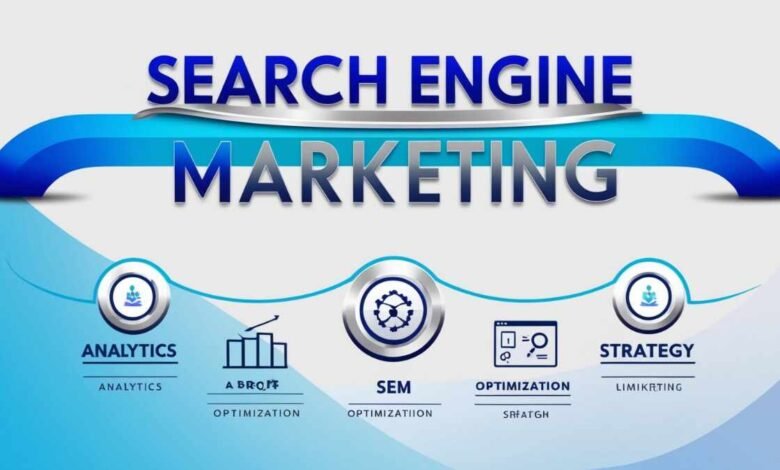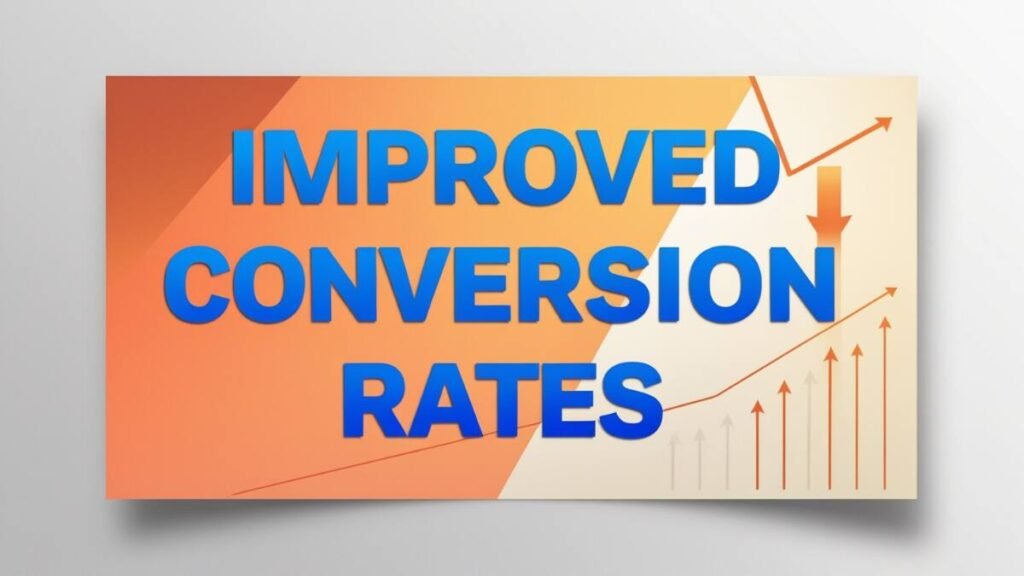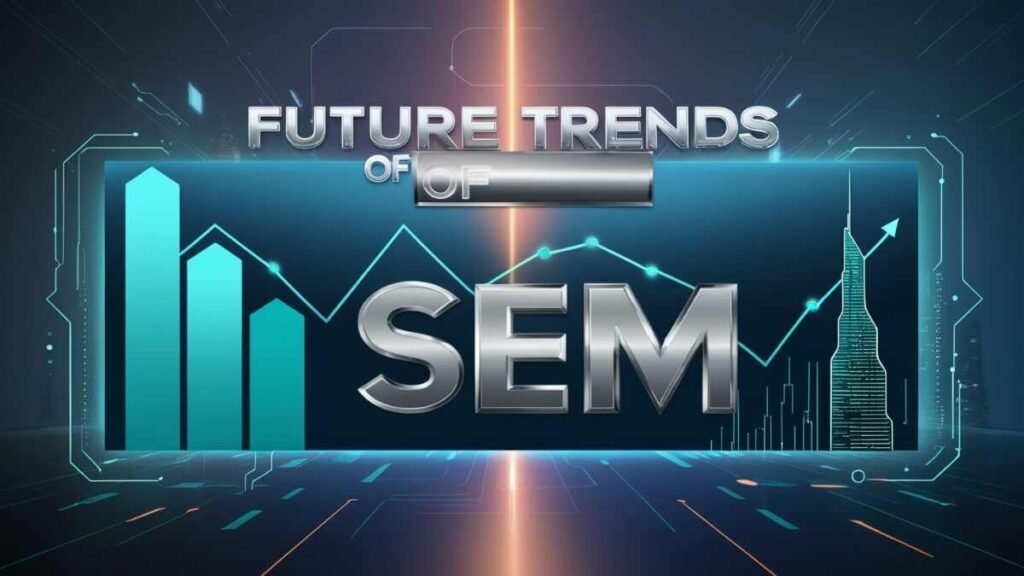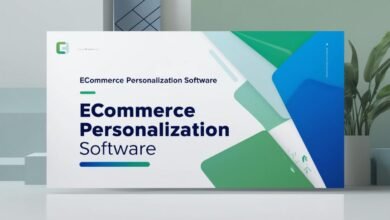Search Engine Marketing: Ultimate Comprehensive
Search Engine Marketing

Search engine marketing uses paid ads for promoting websites through a search engine. Unlike SEO, SEM produces instant traffic compared to SEO, which is a process of organic growth. In addition, SEM targets specific keywords and user queries.
1. Why SEM is Different from SEO
In contrast, SEO is all about optimization of content and structure to rank through natural means, whereas SEM is a paid model where advertisement placements are secured. This helps businesses instantly go to their target audience when organic growth may be slow in competitive markets.
2. Why SEM Is Crucial for Business Growth
Boosting Visibility Quicker: Search Engine Marketing
With SEM, companies come out on top of the search result pages quickly. This is particularly important for new companies and new products, which need fast dissemination to ensure brand recognition and get people interested in your business.
Improved conversion rates

Since SEM targets people actively looking for a product or service, it yields higher-quality leads. These people already intend to purchase, so the conversions are more likely to come with SEM as compared to blanket and non-targeted advertising.
3. Major SEM elements
Paid Search Ads
Paid search ads form the core of SEM. They enable businesses to compete on a cost-per-click basis for a keyword so that ads are shown at the top of search results, directly driving traffic and increasing visibility for specific queries.
PPC Advertising: Search Engine Marketing
Pay-Per-Click (PPC) is a pricing model where businesses pay only when users click on their ads. This cost-effective method ensures budgets are spent on actual user engagement, maximizing return on investment for every campaign.
4. Understanding Paid Search
How Paid Search Works
When users search for these terms, your ad appears at the top or bottom of search results, ensuring prominent placement and increased traffic to your site.
Benefits of Paid Search
The greatest benefit of pay per search is its immediacy. Unlike organic methods, which take much time, pay-per-search delivers results almost instantaneously. This is suitable for time-sensitive campaigns, like product launches or seasonal promotions.
5. PPC Advertising in SEM
How PPC Works in SEM
PPC advertising ensures that advertisers pay only for their ads clicks. This performance-based model minimizes wasteful spending, focusing the business’s budget on users that are engaged and manifesting a genuine interest in what they are offering.
PPC as a cost-effective model
With PPC, a business can set budgets and control costs, allowing small businesses to compete with larger competitors on specific niches—keeping the field leveled in digital advertising.
6. Google Ads: A Hub for SEM
Why Google Ads Reigns Supremacy
Google Ads is the most prominent SEM tool because of its broad reach and sophisticated targeting capabilities. It enables businesses to create search, display, and shopping ads targeting specific demographics, devices, and locations.
Flexibility in Google Ads Campaigns
The platform offers tools for adjusting bids, refining keywords, and testing ad copy. Flexibility ensures campaigns stay effective and efficient, allowing businesses to optimize for maximum ROI.
7. Creating Relevant Ad Copy

Why Ad Copy Matters Your ad copy is going to be the first impression that users make of your business. Good ad copy about interesting headlines and clear descriptions can catch interest and get clicks, which enhances the overall performance of your SEM campaign. Adding a Powerful Call-to-Action (CTA)
It should have a strong CTA like “Shop Now” or “Get a Free Quote” to force users to take action immediately. Inclusion in your ad copy ensures urgency and increases CTR significantly.
8. Keyword Research in SEM
Selecting relevant keywords: Search Engine Marketing
Good keyword research finds the words that people really are searching for. The super-intent keyword “buy laptops online” ensures that all ads reach users who are about to make a purchase, thus maximizing conversion and waste from ad spend.
Long vs. Short Keywords
Short keywords are usually competitive, while long-tail keywords will be more specific in meaning and less expensive to advertise on.
9. Overcoming the SEM Challenge
High Competition
High competition for keywords can inflate costs, mainly in saturated markets. Businesses can win this by focusing on niche keywords and creating ads that differentiate their offerings from competitors.
Low Budget
Small budgets may limit campaign scope. In order to tackle this, focus on high-performing keywords, refine the targeting audiences, and regularly optimize campaigns to maximize the impact of every dollar spent.
10. Maximizing ROI in SEM
Conversion Rate Optimization (CRO)
Converting traffic into customers is the end goal, and strategies such as A/B testing ad copy, improving CTAs, and refining landing pages ensure ROI from campaigns increases.
Campaign Audits
Regular review helps identify underperforming ads, keywords, or strategies. Constant improvements and optimizations of campaigns can help businesses remain efficient and in sync with constant changes that occur in markets over time.
11. Future Trends of SEM

AI and Machine Learning in SEM
AI will transform the landscape of SEM by automating or improving the bidding strategy and audience targeting. Predictive analytics and AI-driven insights are needed to optimize campaigns more effectively than ever before.
Voice Search and SEM
Voice search brings an imperative requirement to adjust your SEM strategies. Keywords like “where to buy affordable laptops near me” will become more trendy, thus making it important to shift to conversational and localized keyword targeting.
12. Conclusion
SEM is a must-have marketing tool for any business looking to expand online. It uses key elements such as PPC ads, Google Ads, and database-driven campaigns to make businesses instantly visible while establishing long-term gains in the cyber world.
Frequently Asked Questions
1. What is the main differentiation between SEM and SEO?
SEM encompasses paid tactics such as PPC to attain instant visibility on a search engine, whereas SEO targets the enhancement of organic ranking with content optimization, technical tweaks, and backlinks over time.
2. What is the budget required for an effective SEM campaign?
The budget will depend on factors such as competition in the industry, the cost of keywords, and the campaign’s objectives. Small businesses can begin with a small budget, which they would have to gradually increase after analyzing the outcomes and fine-tuning their strategies.
3. . What are long tail keywords and why they are important?
They save the cost and attract more qualified leads, and thus are an essential component of the SEM campaigns.
4. What are some ways to measure the success of my SEM campaign?
Some useful metrics that make sense over a campaign are click-through rate (CTR), cost-per-click (CPC), conversion rate, and return on ad spend (ROAS). Tools such as Google Analytics can be used to track and optimize.
5. Is SEM suitable for small businesses?
Yes, SEM is highly effective for small businesses. Its cost-control features, targeted approach, and potential for immediate results make it a great tool for businesses looking to compete in crowded markets.





